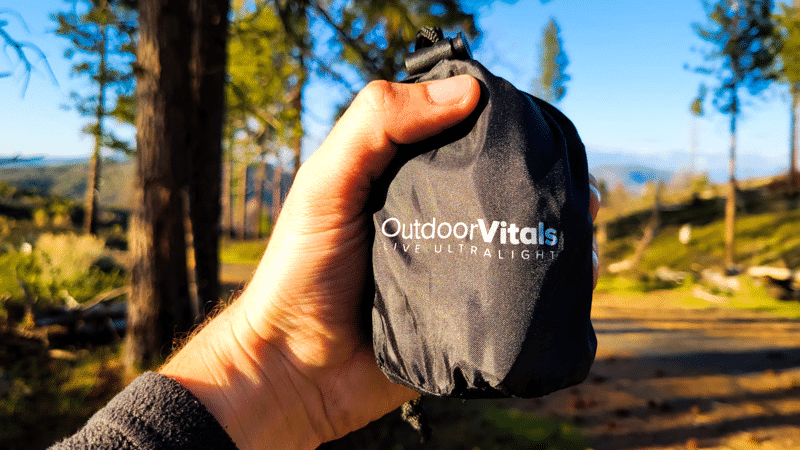Today, I’m reviewing the Atlas Lofftek Hybrid Sleeping Bag from Outdoor Vitals after over one year of using it for car camping and some backpacking.
This is the sleeping bag I bought and received the free backpacking pillow I previously wrote about.
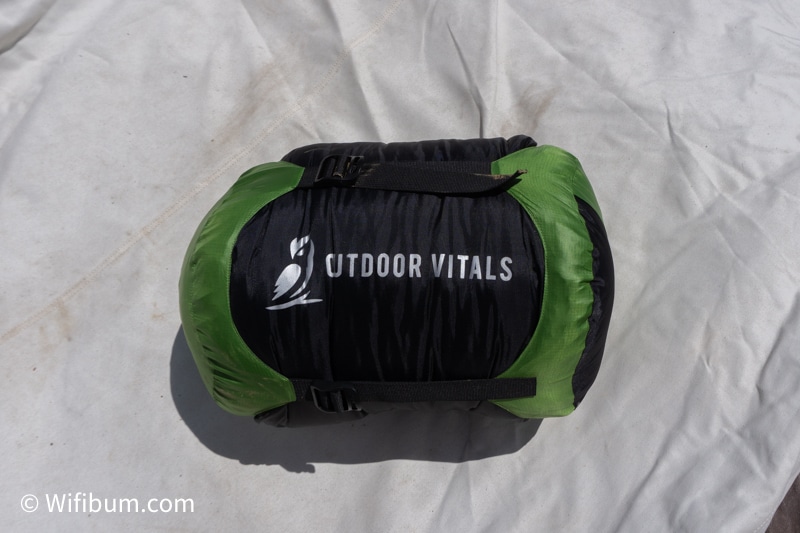
Outdoor Vitals is the relatively new kid on the block touting high-quality products at reasonable prices.
Outdoor Vital Sleeping Bags are currently produced in two versions: The Summit Down series and the Atlas Lofftek Hybrid series.
The Summit Line is one of their OG products and a pure down sleeping bag. The Atlas Lofftek Sleeping Bag is a synthetic down sleeping bag.
Outdoor Vitals Down vs Synthetic Sleeping Bags
In the simplest terms, down sleeping bags perform best in dry environments and lose insulation properties as it gets wet. Synthetics perform better than down if they get damp or slightly wet.
Outdoor Vitals Atlas Lofftek Sleeping Bag Review: Why Buy It?
As I moved to the California and planned on visiting Oregon and Washington, I was looking for something that would keep the insulating properties in heavy condensation situations.
The Atlas Lofftek Hybrid offered an affordable solution for this situation.
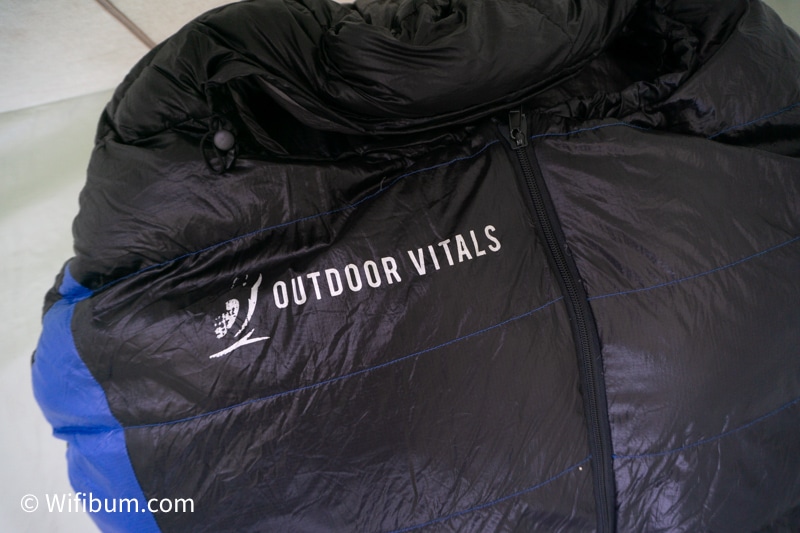
Down sleeping bags also cost a fortune. Even Outdoor Vitals Summit series is north of $350 and they are one of the lowest priced options I’ve seen.
Good synthetic sleeping bags range between $150 and $250.
Temperature Rating: Is the Outdoor Vitals Hybrid Sleeping Bag Warm?
The bag comes in 4 different temperature ratings: 30°F, 15°F, 0°, and -15°F and you can choose between Regular and Long. I’ll get into my experience below, but here are some specs for each rating to compare to your current bag:
30°F
Regular: 2 lb 6.2oz (600 g Fill)
Long: 2 lbs 2.6 oz ( 660 g Fill)
15°F
Regular: 2 lb 9.5 oz (850 g Fill)
Long: 2 lbs 12 oz (925 g Fill)
0°F
Regular: 3 lb 4 oz (1150 g Fill)
Long: 3 lbs 7 oz (1230 g Fill)
-15°F
Regular: 4 lbs 1 oz (1545 g Fill)
Long: 4 lbs 7 oz (1700 g Fill)
The Carry Sack is 3.7 oz for all options.
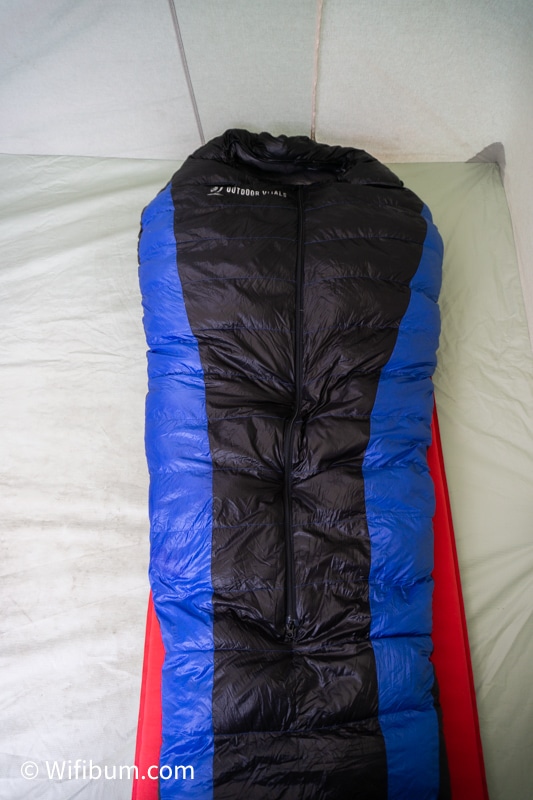
Per Outdoor Vitals website, a 15°F rated bag will be comfortable for the average man at about 15°F outside.
It seems like you need to add at least 10° to any outdoor company’s ratings from personal experience and talking with friends.
At time of writing, the coldest temperature I’ve had my 15° sleeping bag in was 25° and I was somewhat cold, not comfortable. And that was with wearing multiple layers on top and bottom.
At about 35-40°, I have been very cozy wearing just a long underwear and a long sleeve.
For every few degrees below 35°, I noticed I’d have to add a layer.
At 25°, I was wearing a wool base layer, a synthetic long sleeve, a medium fleece, and a thin/medium down jacket. On the bottom I had wool leggings, a pair of athletic pants, and sweatpants.
So if I’m wearing that at 25°, I imagine I would be pretty cold at 15° and quite uncomfortable.
Either I’m not representative of the average man, or their ratings are severely misleading.
However, as I mentioned, nearly every outdoor company is guilty of having unrealistic rating systems.
To be fair, I could have gotten a dud as well. Some reviews on their website claim the rating is accurate and others had issue with it, so it’s a bit inconclusive.
It should be noted that your sleeping pad will also be a huge factor in your warmth. My sleeping pad is more than capable, but since it doesn’t also double as a heater, I was still cold.
If you’re mostly doing 3-season camping, I would think this 15° bag to be able to handle 90% of the situations.
If you’re going to regularly be in very cold environments below 15°, I would suggest doing further research on other bags.
Overall, this is still the warmest sleeping bag I’ve owned, but I was hoping it would be a tad bit warmer based on the rating.
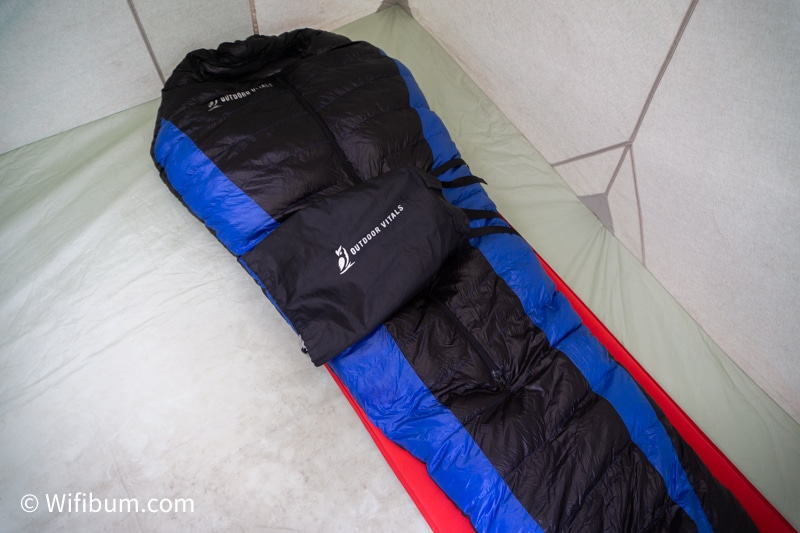
Sleeping Bag Sizing: Should I get a Regular or Long?
Outdoor Vitals Sleeping Bags come in Regular and Long. They recommend to get a regular if you’re shorter than 6 feet tall and to purchase the long if you’re taller than 6 feet.
I’m 6’0″ and about 185lbs on a good day.
So, what if you’re exactly 6 feet tall like I am? Thankfully, I read their FAQ and they answer that exact question and push you toward the Long size.
I am very happy I purchased the Long option. I think the Long is even not that “long.”
If I zip the zipper all the way up, it feels pretty snug and I have to have the sleeping bag tight around the toe box to get the hood over my head.
They say the Long version is good for someone up to 6’6″ – yet I’d be surprised if a 6’5″ was comfortable in the Long option.
Mummy Shape Sleeping Bag: A Good Experience?
Sleeping bags are typically categorized into three categories: rectangular, semi-rectangular, and mummy shaped.
The Outdoor Vitals Atlas Lofftek Hybrid is a mummy shape. I would argue it’s the best shape for backpacking since it’s conscious of reducing material which reduces the weight.
My other primary sleeping bag was considered a mummy, but it’s definitely not as angled/defined as this one.
The Long version also adds some width which helps. I have an average build and find it snug around the shoulders.
Anyone with broader shoulders might find it a bit too snug, but I find it to be a good fit.
Center Zipper Sleeping Bags: A User-Friendly Feature
I’m so used to this sleeping bag I forgot how amazed I was by this feature until I was re-reading Outdoor Vitals website.
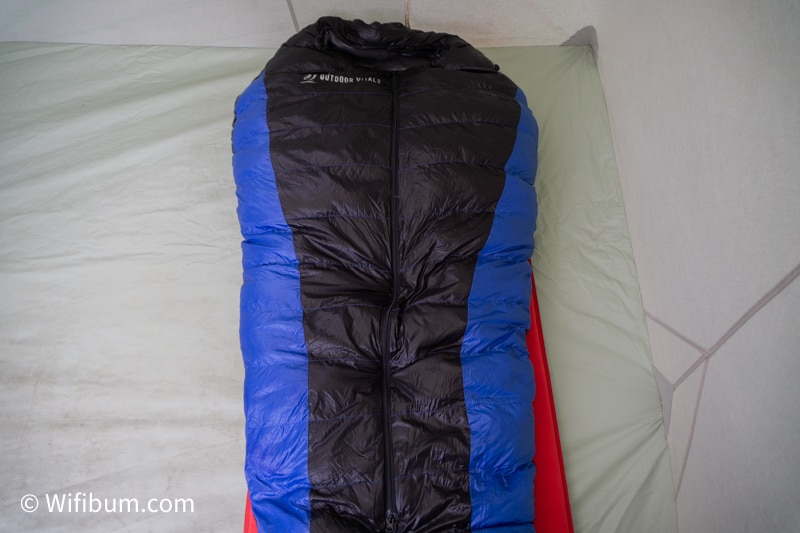
The center zipper allows you to get your feet into the toe box, start leaning back, and zip it all the way up as you fully lay down.
No more trying to awkwardly reach down and pull up a size sipper that feels like your arm might dislocate as you bring it up.
As someone that switches between sleeping on my back and sides, I found this sleeping bag to toss and turn with me. I never wake up trying to figure out which side the zipper is one and having it somehow underneath me.
A+ to Outdoor Vitals on this simple ergonomic and user-friendly feature.
Shoulder Baffles: Outdoor Vital Showing Its Design Skills
I’ll follow up that awesome zipper talk with another feature I love: the shoulder baffles.
It’s like having two small pillows on your shoulders that help keep the warmth in.
And it DOES make a huge difference, even if you don’t have the hood all the way up, it seems to lock in most of the heat.
It really adds to the “cozy” factor of this sleeping bag.
The Atlas Lofftek Sleeping Bag Carry (Stuff) Sack: Needs Improvement
One common theme I’ve seen in Outdoor Vital reviews and in their Facebook group is a very obvious stitching issue some products.
This was notable in reviews of their jackets, some sleeping bags, and from my personal experience with their stuff sack.
I believe they are aware of the lack of stitching quality, so it might be something they have fixed for their next generation models.
It’s the one reason I put off buying their jackets. My sleeping bag has had some thread come out here and there, but nothing I’m concerned about.
Here is a picture of Day 1 of testing out my stuff sack.
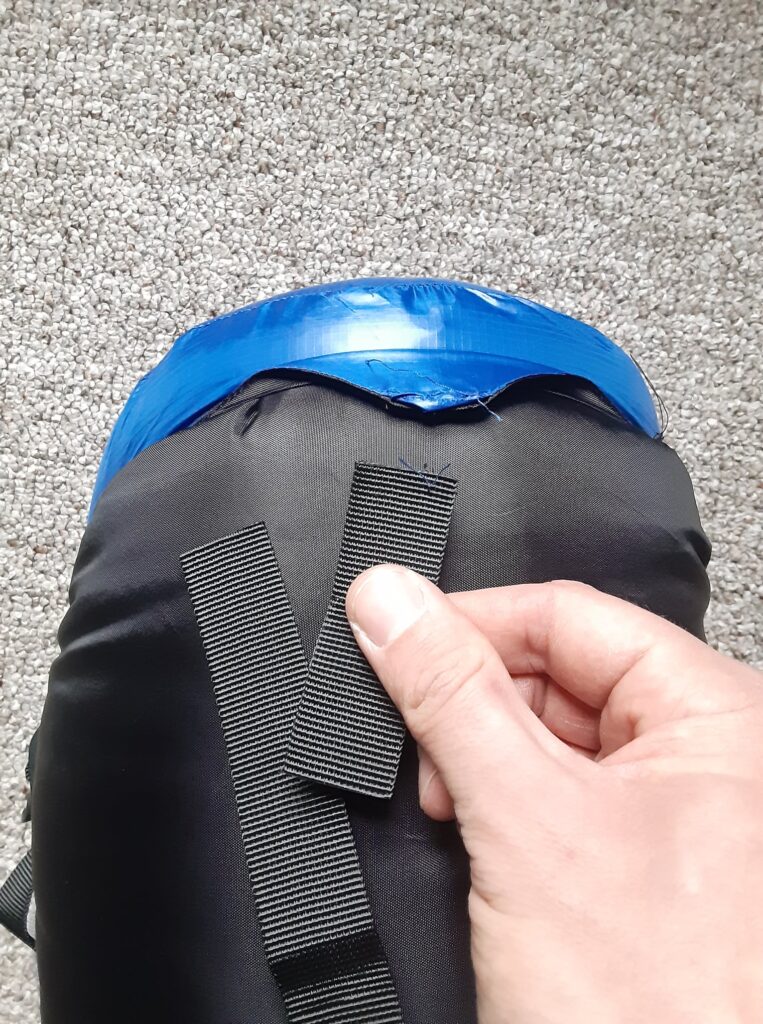
And yes, I put my weight onto the bag as I tried tightening the straps. After further inspection, there were barely any stitches holding them together.
I was still using this stuff sack with the issue because I wasn’t backpacking at the time and the other 3 straps worked well enough. However, eventually the sides of the carry sack started tearing and eventually I just tossed it in the trash.
I actually didn’t get a replacement until recently because they knew of the issue and were designing a new sack.
When I reached out, they said they hadn’t gotten around to making the new style. However, the replacement bag is clearly a different material than my original, so maybe they at least changed that aspect.
The new carry sack has held up for the past couple months. I’ll come back and edit this if any issues ever develop. However, it’s unclear if some still come with the older model.
Outdoor Vitals does have good customer support, so that helped ease the issue.
What I Like About the Outdoor Vitals Atlas Loftekk Sleeping Bag
After addressing the high level features and personal observations, let’s jump into what I like and don’t like about the Outdoor Vitals Atlas Lofttek Hybrid Sleeping Bag.
The Pros
- An affordable, warm 3 season+ sleeping bag
- Withstood over a year of regular use. That’s to be expected, but you never know!
- Center zipper makes getting in and out of the bag effortless
- Shoulder baffles are cozy and effectively seal in heat.
- Stayed warm when the sleeping bag got wet. I had a leak in the roof once and the foot box of the bag got soaked. My feet stayed warm though the night and it didn’t lose much, if any, loft.
- Overall fit is good. For me, it provides just enough space without feeling claustrophobic.
- Outdoor Vitals has fast and competent support.
What I Don’t Like About the Atlas Lofftek Hybrid Bag
I realize some of these may be nit-picking, but I figure I’d include as many potential issues I could.
The Cons
- When the zipper goes all the way down and disconnects, it was a huge pain to reconnect it. It’s only happened once, but I made sure to never do it again.
- Stuff sack stitching was poor. I’m afraid similar methods were used to sew the sleeping bag and can see some random loops from it unravelling. It hasn’t resulted in any issues as of now.
- Although Outdoor Vitals operates out of the U.S., the production is in China. However, most outdoor brands outsource manufacturing. Outdoor Vitals’ outsourced manufacturing coupled with its direct to consumer internet model really allows this to be sold at a desirable price point – so you have to take the good with the bad.
- The foot box can be a little snug at times. I wear a size U.S. 12 shoe and they just fit in there without causing resistance from the fabric.
- Some dead spots are forming in the fill. I can see more light through certain areas. I haven’t noticed it impacting the performance, but it may be an issue down the road.

Conclusion: Should You Buy the Outdoor Vitals Atlas Sleeping Bag?
I paid about $200 for my Atlas Hybrid bag in a time when many bags I was looking at were $300+.
At that price point, the only way I would not recommend it was if it fell apart by now or the loft was gone. Neither are true, so I do recommend considering this as an option.
I would highly recommend the 15° bag for conditions for 30° and warmer. It can handle below 30°, but be prepared with several warm layers.
The Atlast Lofftek is a solid 3-season sleeping bag that packs reasonably small, is great for 90% of trips I (and my friends) tend to take, and Outdoor Vitals has great customer support if you decide it’s not for you.
Frequently Asked Questions
How to Store a Down Sleeping Bag at Home
If this is your first nice sleeping bag, you may be wondering how to store it when you’re not using it.
There are many options. The primary thing you’re looking to avoid is having it crammed in the tiny stuff sack.
At times, I’ve hung it over a railing in a lofted apartment, hung it in a closet by draping it over a hanger, or buying a mesh storage sack like below:
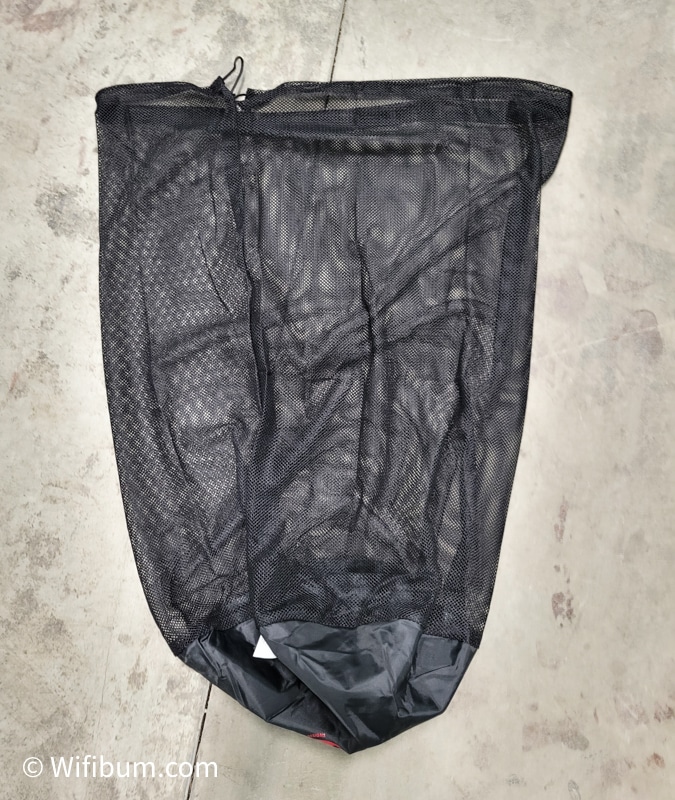
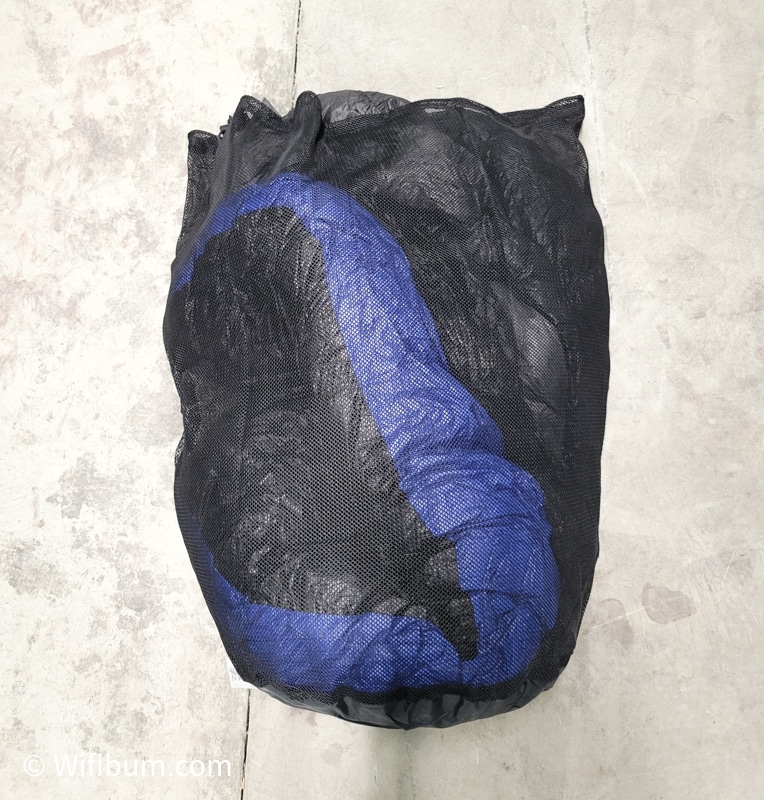
How to Wash a Down Sleeping Bag
To be honest, I don’t.
I find by airing it out in a mesh bag in the house or on a chair outside, it tends to reduce the smell enough for me.
Check out Outdoor Vitals proper guide.
Is Outdoor Vitals Legit?
Yes, Outdoor Vitals is legit.
Outdoor Vitals is a relative newcomer to the outdoor gear space. Using a direct to consumer model, they tout high quality products at low prices.
I’ve only used a few of their products, but I have seen many happy customers in their members-only Facebook group.
They also answer questions and take criticism well and work them into the next generation of products.
My Sleeping Bag Philosophy
Sleeping bags are an important piece of gear for any trip. While it is easy to become obsessed with finding the perfect one, I tend to think their importance is overrated.
In my opinion, most casual backpackers and campers can get away with one primary sleeping bag and potentially a liner.
You might have been gifted or handed down a sleeping bag, or bought a cheap one one initially, and you may be able to extend the life of it.
It’s only when you start camping more and more in shoulder seasons, in the mountains, or other times you may experience below freezing temperatures.
For YEARS I used a very basic Kelty 41 degree bag in freezing temperatures with a liner and layers.
If you already own a decent down jacket, wool long underwear, and other warm clothing, you may be able to wear 2-4 layers and make your current sleeping bag work.
I’m happy I initially spent money on quality, warm clothing before a second sleeping bag since the clothing is used much more regularly than that super warm sleeping bag you only need a couple times per year.
If you have an adequate layering system and you’re still cold or it’s inconvenient to bring a bunch of clothes just for sleeping, then you’re at the point where upgrading your sleeping bag makes perfect sense.


